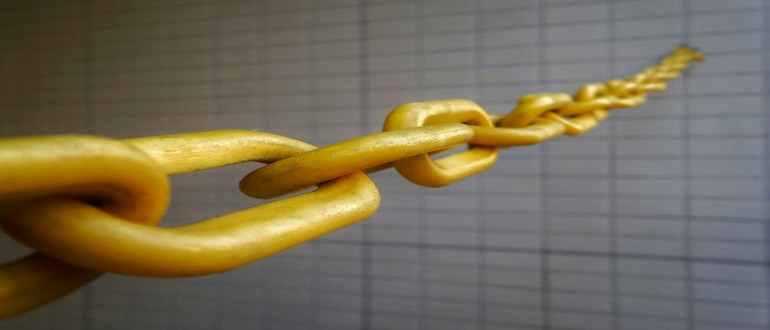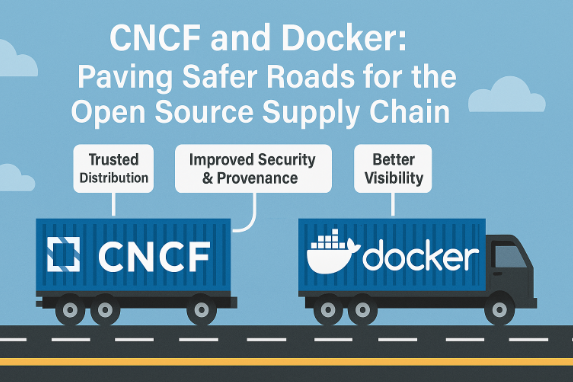
Sometimes the timing writes the story for you. The same week headlines blared about a worm crawling through npm (Shai-Hulud, for the Dune fans among us), the CNCF and Docker announced a partnership to strengthen how open source software gets distributed.
Coincidence? Maybe. But I don’t think so.
When the body that shepherds Kubernetes and the company that still dominates the container runtime world get together on supply chain security, it’s not just another press release. It’s a recognition that the golden paths we’ve been talking about in platform engineering aren’t paved in gold at all—they’re paved in base images. And if those base images aren’t trusted, consistent and secure, all the developer experience magic in the world won’t matter.
The Backdrop
The Cloud Native Computing Foundation (CNCF) is the steward of Kubernetes, Prometheus, Envoy and a long list of projects we all depend on, whether we realize it or not. Docker, for its part, has had a complicated journey. It went from darling of the developer world to struggling commercial entity, split into Docker Hub and Mirantis-controlled Docker Enterprise, and now back to relevance through Docker Desktop and its Sponsored Open Source program.
That program has quietly become essential. It guarantees open source projects a home on Docker Hub without rate limits, with namespaces that users can trust and tooling to improve security. Pull a popular image today — say, nginx or redis — and chances are you’re relying on that program.
Now, CNCF is formally plugging its projects into Docker’s Sponsored OSS pipeline. In plain English: If you pull an official CNCF project container from Docker Hub, you should have more confidence in what you’re getting.
What the Partnership Delivers
The announcement boils down to three things:
- Trusted Distribution
CNCF projects will have guaranteed, official Docker Hub namespaces. No more guessing whether cncf/projectname is legit or an imposter. This matters because impersonation and typo-squatting are very real threats. - Better Security and Provenance
The Sponsored OSS program already includes tooling for SBOMs, vulnerability scanning, and verified publishing. Bringing CNCF projects under that umbrella means the images your platform consumes are easier to validate. - Visibility and Analytics
Project maintainers will have better insights into who’s pulling their images and how often. That may not sound exciting, but data is power. It means maintainers can prioritize patches and releases based on real-world usage.
For developers, this mostly translates into a smoother experience. Fewer forks, fewer random mirrors, fewer “is this the right image?” Slack threads. For platform engineers, it translates into fewer excuses for skipping provenance checks.
Why Platform Teams Should Care
Let’s connect the dots.
Platform engineers build golden paths. Those golden paths usually start with base images. A developer kicks off a template in Backstage or Scaffold, and somewhere in that Dockerfile, there’s a FROM alpine:latest or FROM ubuntu:20.04. From there, everything else cascades.
If that base image is compromised, so is the golden path. If that base image is inconsistent across environments, the path isn’t golden — it’s booby-trapped.
By having CNCF projects distributed through Docker’s Sponsored OSS pipeline, platform teams inherit stronger defaults. You still need to mirror, scan and verify — but the signal-to-noise ratio improves. Instead of dealing with dozens of potential sources, you can focus on a smaller, more trustworthy set.
This isn’t just a developer convenience. It’s a real reduction in supply chain attack surface.
The Risks and Trade-offs
Of course, no deal is perfect. And this one raises some important questions:
- Vendor Lock-In
Are we putting too many eggs in Docker’s basket? Docker Hub is a single service. If it goes down—or worse, is attacked—the blast radius is massive. - Governance and Neutrality
CNCF prides itself on vendor neutrality. Partnering closely with Docker raises questions. Will GitHub Container Registry, Quay, or others get the same treatment? - Security by Delegation
Stronger defaults are great, but they can create complacency. If platform teams take this as a reason to stop running their own scans, we’ll be back where we started. - Eggs in One Basket
The more traffic flows through Docker Hub, the more attractive a target it becomes. Hardening needs to match that scale.
None of these is a reason to dismiss the deal. But they are reasons to stay clear-eyed.
Sidebar: Why Base Images Matter
A single base image can ripple across thousands of workloads.
- Every golden path starts somewhere. For most teams, it’s a FROM line in a Dockerfile.
- One compromise, many victims. If an attacker poisons a base image, every downstream service inherits the backdoor.
- Updates cascade too. A patched base image means thousands of services get fixed at once—if you actually rebuild them.
That’s why partnerships like CNCF × Docker matter. They don’t eliminate the need for vigilance, but they raise the floor. They make it easier for platform teams to start secure, not scramble after the fact.
Shimmy’s Take
This deal is pragmatic. It doesn’t solve supply chain security. It doesn’t make all Docker images safe. It doesn’t absolve platform teams of responsibility.
But it does send a signal: We’re moving from DIY to institutionalized supply chain hygiene.
For years, we’ve told developers to “trust but verify.” In reality, most did neither. They pulled whatever was on Stack Overflow and prayed. By consolidating trust into fewer, stronger channels, CNCF and Docker are at least giving us a better starting point.
My worry? That platform teams will see this as a get-out-of-jail-free card. “Hey, it’s from CNCF and Docker, so it must be fine.” That’s the wrong lesson.
Here’s the right one: You can’t pave golden paths on quicksand. Strong base images are the asphalt. This deal gives us asphalt that’s harder to tamper with. But it’s still up to us — platform engineers, DevOps teams, security leads — to decide how to pour it, how to test it and how to keep it patched.
So yes, I’ll call this a win. But it’s a win that comes with a reminder: Fewer things to verify is not the same as nothing to verify. The supply chain isn’t magically fixed. It’s just a little less fragile today than it was yesterday.
And in this business, sometimes that’s the best we can ask for.

